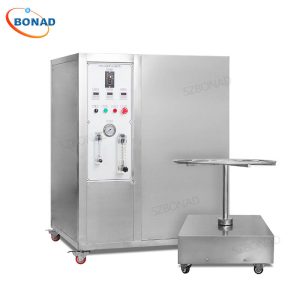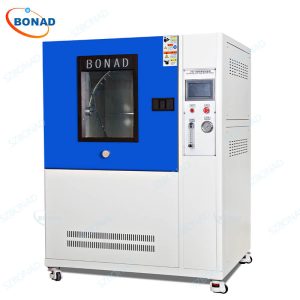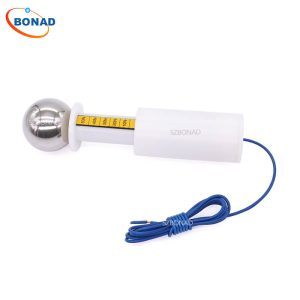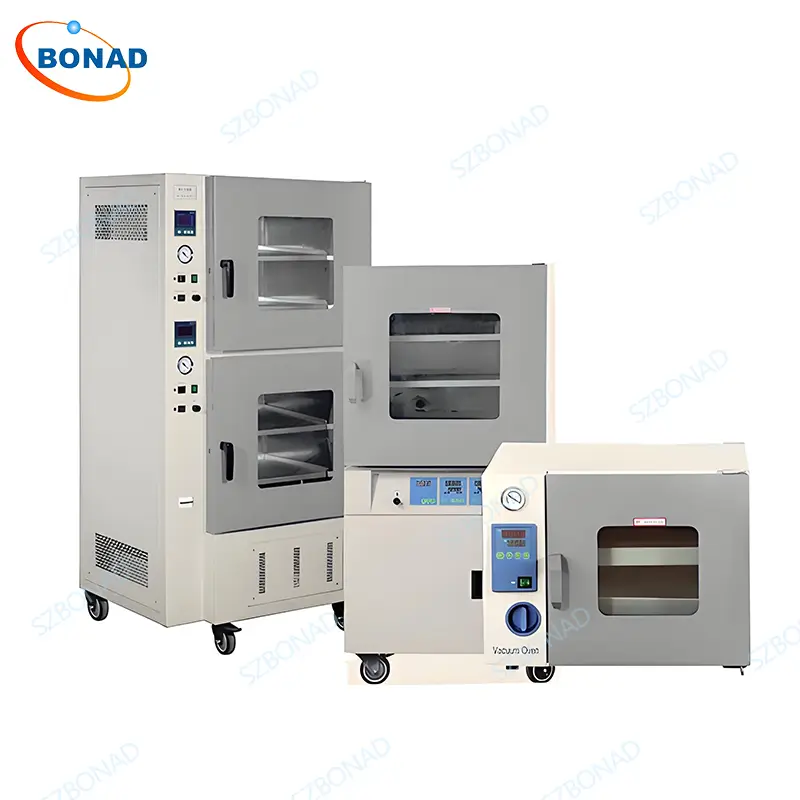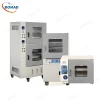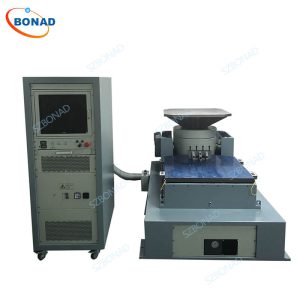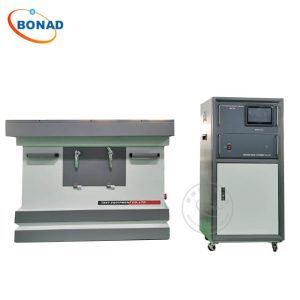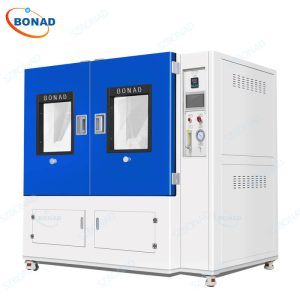IEC 61010-1 Vacuum Drying Oven – BONAD drying instrument
Standards:
- IEC 61010-1 Certified: Ensures electrical safety for laboratory equipment.
- Additional Protections: Over-temperature cutoff, power-failure memory, and reinforced insulation.
Applications:
- Drying heat-sensitive materials (e.g., electronics, pharmaceuticals, biological specimens).
- Processing flammable solvents (e.g., acetone, ethanol) without explosion risks.
- Dehydrating easily oxidized compounds (e.g., battery components, metal powders).
- Handling complex-shaped items (e.g., mechanical parts, porous materials) without residue.
- Specialized uses: Semiconductor manufacturing, chemical synthesis, and R&D labs.
Features:
- Vacuum-Optimized Design
- Integrated vacuum pump port (pump optional) for pressures down to -1 bar.
- Silicone door gasket and adjustable seal for airtight integrity.
- Inert gas filling capability (optional) to prevent oxidation.
- Precision Control & Safety
- Dual digital displays: Real-time vs. set temperature monitoring.
- Programmable drying cycles (optional) and 40% faster drying vs. conventional ovens.
- Over-temperature protection and automatic power-off.
- Durable Construction
- Cold-rolled steel housing with anti-corrosion baking varnish finish.
- Double-layered tempered glass door for visibility and insulation.
- Multi-tiered stainless steel shelves (1–6 included).
- Flexible Configurations
- Capacity: 10L to 913L (benchtop/vertical models).
- Temperature Range: RT+10°C to 65°C / 100°C / 200°C / 250°C.
- Power Options: 300W to 5600W.
- Specialized Versions: For electronics, batteries, chemicals, or biology.
Technical Configurations
| Category | Options |
|---|---|
| Chamber Design | Single, dual, or triple cabinets |
| Shelves | 1–6 adjustable racks |
| Temperature | RT+10°C to 65°C / 100°C / 200°C / 250°C |
| Power Input | 300W–5600W (customizable per model) |
| Special Fields | Electronics, batteries, chemicals, biology, semiconductors |
Advantages Over Conventional Drying
- Lower Boiling Points: Accelerates evaporation of solvents under vacuum.
- Zero Sample Displacement: No air convection preserves powder/granular integrity.
- Oxidation Resistance: Vacuum/inert gas prevents chemical degradation.
- Residue-Free Drying: Ideal for intricate parts and porous materials.
How to Use
- Setup: Load samples, close door, and connect vacuum pump tubing.
- Vacuum Creation: Activate pump, close balance port, and monitor pressure (-1 bar).
- Drying Phase: Set temperature/time via microprocessor controller.
- Completion: Vent chamber via balance port, then remove samples.
⚠️ Critical Sequence: Always shut vacuum valve before turning off the pump.

